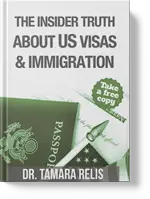Artists have long looked to the United States as a place where creativity can flourish, from Broadway to Hollywood, from art galleries in New York to music festivals across the country. But for foreign artists, securing the right to live and work in the U.S. is not as simple as packing a suitcase and booking a ticket. The U.S. immigration system requires proof of your ability, your purpose, and your plans and that’s where the O-1 visa for artists comes in.
The O-1 visa is a prestigious nonimmigrant classification reserved for individuals who have risen to the very top of their field. For artists, this means not just talent, but a track record of recognized achievements. It’s designed for those whose work has received national or international acclaim and who are coming to the U.S. to continue their creative endeavors.
In 2025, with evolving arts industries and increasingly competitive immigration standards, a strong O-1 visa application is as much about presentation as it is about talent. This guide will help you understand the requirements, process, and key tips for turning your artistic achievements into a compelling visa case.
What Is the O-1 Visa for Artists?
The O-1 visa is divided into categories, and for artists, the relevant classification is the O-1B visa. It is granted to individuals with extraordinary ability in the arts, motion picture, or television industry. This covers a wide range of creative professionals actors, musicians, dancers, designers, photographers, visual artists, and more.
Qualification Criteria for Artists
To qualify, an artist must demonstrate extraordinary ability by showing distinction, meaning a high level of achievement that is significantly above that ordinarily encountered. This can be proven through either:
- Receipt of a significant national or international award, such as a Grammy, Emmy, or similar; or
Evidence of at least three out of six regulatory criteria, which may include:
- Leading roles in productions or exhibitions with a distinguished reputation
- Press coverage in major publications or media outlets
- Critical reviews or testimonials from recognized experts
- Record of commercial success (e.g., box office sales, album sales)
- Recognition from organizations, critics, or other experts in the field
- High salary or remuneration compared to others in the industry
- Leading roles in productions or exhibitions with a distinguished reputation
The O-1 Visa Application Process for Artists
Step 1: U.S. Petitioner
An artist cannot self-petition. The application must be filed by a U.S. employer, agent, or organization acting as the petitioner.
Step 2: File Form I-129
The petitioner files Form I-129, Petition for a Nonimmigrant Worker, along with supporting documentation of the artist’s extraordinary ability and the planned events or work in the U.S.
Step 3: Provide an Itinerary and Contracts
USCIS requires a detailed itinerary of planned performances, exhibitions, or events, as well as contracts or agreements that outline the artist’s engagements.
Step 4: Advisory Opinion
An advisory opinion from a relevant peer group, labor organization, or expert in the field is often required to validate the artist’s qualifications.
Step 5: Visa Processing and Interview
Once USCIS approves the petition, the artist applies for the visa at a U.S. embassy or consulate, attending an interview before final approval.
Duration and Extensions
An O-1 visa is typically granted for the length of the event, tour, or project, up to three years initially. Extensions are possible in one-year increments for ongoing projects.
Why an O-1 Visa Lawyer Is Essential for Artists
Artists often have nontraditional career paths, making it challenging to frame their work in legal terms that meet USCIS requirements. An experienced O-1 visa lawyer knows how to translate artistic achievements into the language of immigration law, organize persuasive evidence, and prepare a strong petition that avoids unnecessary delays or denials.
Common Challenges for Artists Applying for O-1 Visas
- Lack of formal awards but significant industry recognition requiring creative evidence strategies.
- Freelance or project-based work, which can complicate proving sustained employment.
- Tight deadlines when tied to event dates or performance schedules.
How Relis Law Supports Artists Seeking O-1 Visas
At Relis Law, we’ve worked with artists across disciplines to build winning O-1 cases. We help identify the strongest evidence, prepare compelling advisory opinions, and craft itineraries that satisfy USCIS requirements while reflecting the reality of an artist’s work. Our goal is to ensure your visa is an asset, not an obstacle, in pursuing your U.S. opportunities.
Bring Your Art to the U.S. Stage with Confidence
The O-1 visa for artists is more than just an entry document it’s recognition of your exceptional talent and the value you bring to the U.S. cultural landscape. While the process can be demanding, the reward is the opportunity to share your creativity with one of the most dynamic audiences in the world.
With the right preparation and legal support, you can turn your achievements into a compelling case that opens the doors to U.S. stages, galleries, and screens. At Relis Law, we’re here to ensure your application reflects the artistry and dedication that got you this far and to help you take your next big step.
FAQ
Can I apply for an O-1 visa if I’m a freelancer?
Yes, but you’ll need a U.S.-based agent or organization to act as your petitioner and present a clear itinerary of engagements.
How far in advance should I apply for an O-1 visa?
It’s best to apply at least three to six months before your first planned U.S. event to allow for processing and possible delays.
Can my family join me on an O-1 visa?
Yes. Spouses and unmarried children under 21 can apply for O-3 visas to accompany you, though they cannot work in the U.S.
Dr. Tamara Relis
Latest posts by Dr. Tamara Relis (see all)
- Work Visa Lawyer - October 3, 2025



